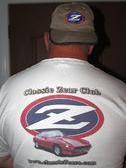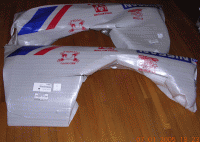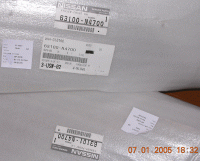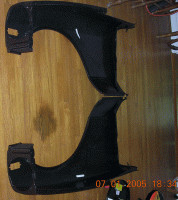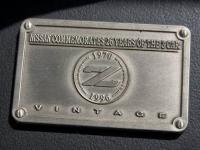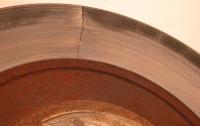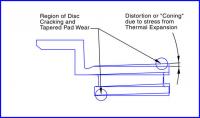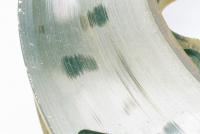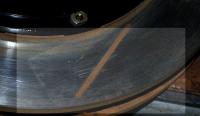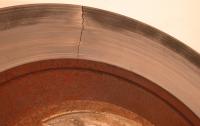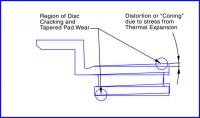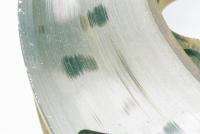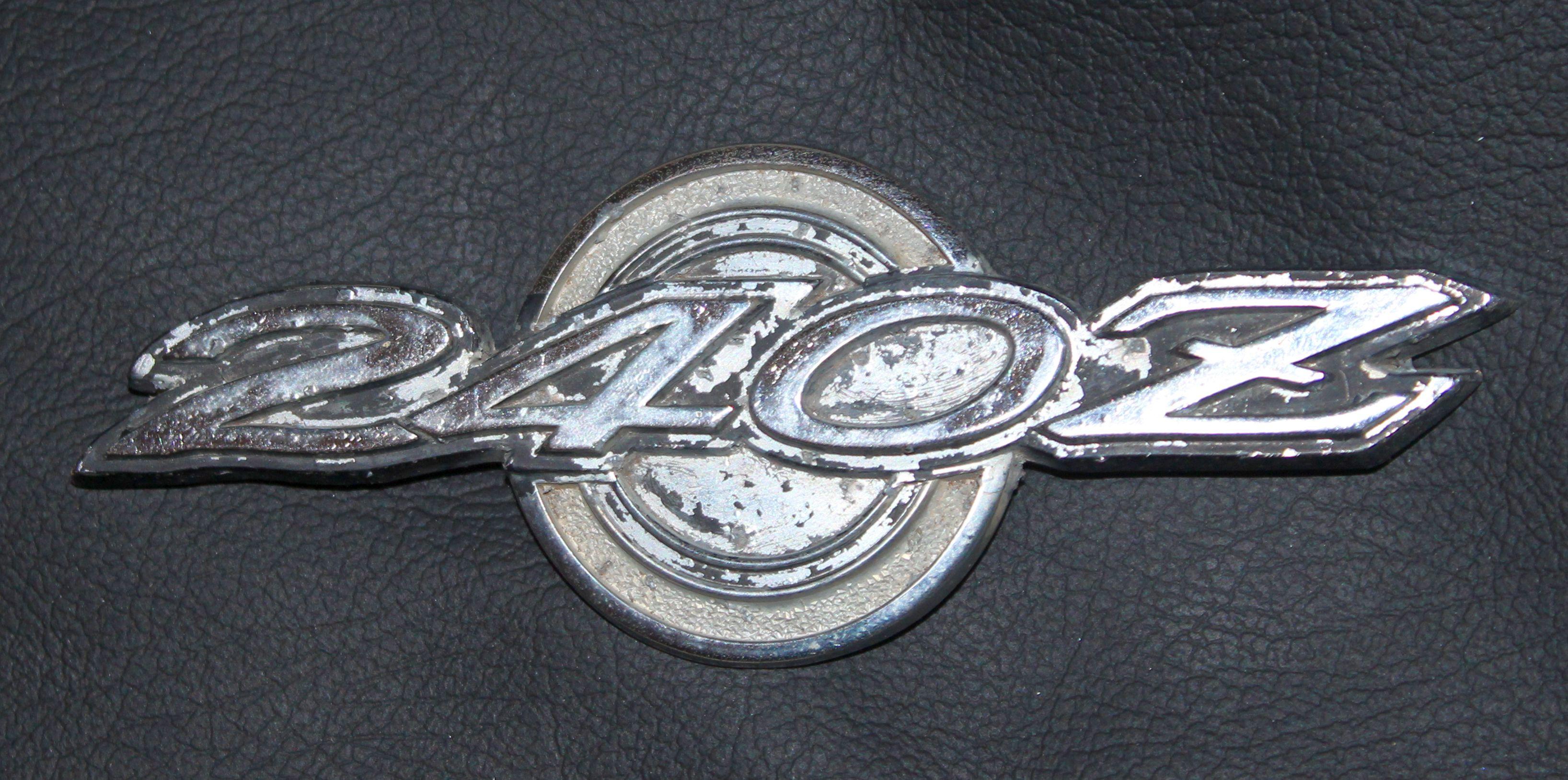
Everything posted by hls30.com
-
Can you name the Mystery Seats??
I have seen those seats in a Mitsu. conquest TSI, but they might not have started there! Will
-
Can you name the Mystery Seats??
Those are imaginary seats! A picture perhapse!!! Will
-
A good buy?
Offer $2000, if you can't set the hook, move to the next hole! $6500 for something that needs so much to be a nice 72 240Z. The reason he has'nt seen many in that conditon is he hasn't bothered to look! If he can't be bothered to tist his mods, you can't be bothered to trade your money for his car! Will
-
Are OEM factory fenders still available?
I just got some Factory fenders today, here are some pics of the packaging, and the fenders. They do not appear to be aftermarket. Will
-
Warped Rotor Myth (by Beandip)
This is Beandip (garys) thunder-he found the article! I thought it was excellent too. Thanks again Gary! Will
-
240z shell
Private feedback-previous experience-yellow flag!!! Will
-
How Close Are Our VIN #'s
There is one in every crowd-unfortunately he owns two :laugh: ! 86306, I'll add the rest later-2 more I don't remember, plus a bunch of parts cars... Will
-
New and improved! Bimonthly poll of the month
Easy answer, the 240Z Z designer no longer worked for Nissan-he retired! The 350Z was in the works-it was an "Oh, by the way, we need this by tomorrow" thing. The designer had never seen a 240Z emblem... Actually it was probably to tie the old and the new together for the advertising campaign. Will
-
New and improved! Bimonthly poll of the month
Vicky Be careful! A picky person (for lack of a better term) could ask you to point out any S30 that arrived at a dealer within a year of its mfr date with this! But I won't!
-
New and improved! Bimonthly poll of the month
V12Horse, When you really get down to it, a bone stock original could not be driven on the street, it would have to be a garage/trailer queen-Nissan has never supplied a license tag that was approved by any government as standard equipment from the factory. Will
-
New and improved! Bimonthly poll of the month
[quote name=so i take it a zed is beautiful from every angle till u change the engine then its just a plain ugly duck mick Now, I never said or would say that! The only things that can make a Z ugly are owners who over or poorly do bodywork, or have no concept of safety or a finished look There was a yellow 280ZX that looked like it had a Catipillar snow plow for a front end-Huge airdam-the car was made to look ugly because of the overdone bodywork. (I could not find the link) There is a 240Z running around the low country that has huge unpainted flairs haphazzardly and visably siliconed on, thin wheels with massive spacers to move them out to the flares, an open exhaust, and a really glossy paintjob-right over dents, dings and rust, that is ugly! (I cary a camera in the car to catch a picture if I see it again-we need a poster child for what not to do to a S30) Even a body mod that doesn't do it for me(the ZG flares) can be done well, and look good. I personally like the look of an completed and well executed RB, V8, in a Z-but I must admit, the L6 looks pretty fine in one too! In my 240Z, I would prefer to have Nissan parts when I upgrade using non-S30 parts! Will PS, sorry for the missing 10%!
-
Warped Rotor Myth (by Beandip)
My appologies for the lack of puntuation at the end of the sections-the article was jsut unde 20000 characters, and to break it up into two parts at the end of a section I had to loose 23 characters-I didn't want to change a word, so I changed the punctuation. The complete article can be found here: http://www.stoptech.com/whitepapers/warped_rotors_myth.htm I appreciate Gary for sharing this with all of us. Will
-
Warped Rotor Myth (by Beandip)
PREVENTION There is only one way to prevent this sort of thing-following proper break in procedures for both pad and disc and use the correct pad for your driving style and conditions. All high performance after market discs and pads should come with both installation and break in instructions. The procedures are very similar between manufacturers. With respect to the pads, the bonding resins must be burned off relatively slowly to avoid both fade and uneven deposits. The procedure is several stops of increasing severity with a brief cooling period between them. After the last stop, the system should be allowed to cool to ambient temperature. Typically, a series of ten increasingly hard stops from 60mph to 5 mph with normal acceleration in between should get the job done for a high performance street pad. During pad or disc break-in, do not come to a complete stop, so plan where and when you do this procedure with care and concern for yourself and the safety of others. If you come to a complete stop before the break-in process is completed there is the chance for non-uniform pad material transfer or pad imprinting to take place and the results will be what the whole process is trying to avoid. Game over In terms of stop severity, an ABS active stop would typically be around 0.9 G’s and above, depending on the vehicle. What you want to do is stop at a rate around 0.7 to 0.9 G's. That is a deceleration rate near but below lock up or ABS intervention. You should begin to smell pads at the 5th to 7th stop and the smell should diminish before the last stop. A powdery gray area will become visible on the edge of the pad (actually the edge of the friction material in contact with the disc - not the backing plate) where the paint and resins of the pad are burning off. When the gray area on the edges of the pads are about 1/8" deep, the pad is bedded For a race pad, typically four 80mph to 5 and two 100mph to 5, depending on the pad, will also be necessary to raise the system temperatures during break-in to the range that the pad material was designed to operate at. Hence, the higher temperature material can establish its layer completely and uniformly on the disc surface Fortunately the procedure is also good for the discs and will relieve any residual thermal stresses left over from the casting process (all discs should be thermally stress relieved as one of the last manufacturing processes) and will transfer the smooth layer of pad material onto the disc. If possible, new discs should be bedded with used pads of the same compound that will be used going forward. Again, heat should be put into the system gradually - increasingly hard stops with cool off time in between. Part of the idea is to avoid prolonged contact between pad and disc. With abrasive pads (which should not be used on high performance cars) the disc can be considered bedded when the friction surfaces have attained an even blue color. With the carbon metallic type pads, bedding is complete when the friction surfaces of the disc are a consistent gray or black. In any case, the discoloration of a completely broken in disc will be complete and uniform Depending upon the friction compound, easy use of the brakes for an extended period may lead to the removal of the transfer layer on the discs by the abrasive action of the pads. When we are going to exercise a car that has seen easy brake use for a while, a partial re-bedding process will prevent uneven pick up The driver can feel a 0.0004" deposit or TV on the disc. 0.001" is annoying. More than that becomes a real pain. When deposit are present, by having isolated regions that are proud of the surface and running much hotter than their neighbors, cementite inevitably forms and the local wear characteristics change which results in ever increasing TV and roughness Other than proper break in, as mentioned above, never leave your foot on the brake pedal after you have used the brakes hard. This is not usually a problem on public roads simply because, under normal conditions, the brakes have time to cool before you bring the car to a stop (unless, like me, you live at the bottom of a long steep hill). In any kind of racing, including autocross and "driving days" it is crucial. Regardless of friction material, clamping the pads to a hot stationary disc will result in material transfer and discernible "brake roughness". What is worse, the pad will leave the telltale imprint or outline on the disc and your sin will be visible to all and sundry The obvious question now is "is there a "cure" for discs with uneven friction material deposits?" The answer is a conditional yes. If the vibration has just started, the chances are that the temperature has never reached the point where cementite begins to form. In this case, simply fitting a set of good "semi-metallic" pads and using them hard (after bedding) may well remove the deposits and restore the system to normal operation but with upgraded pads. If only a small amount of material has been transferred i.e. if the vibration is just starting, vigorous scrubbing with garnet paper may remove the deposit. As many deposits are not visible, scrub the entire friction surfaces thoroughly. Do not use regular sand paper or emery cloth as the aluminum oxide abrasive material will permeate the cast iron surface and make the condition worse. Do not bead blast or sand blast the discs for the same reason The only fix for extensive uneven deposits involves dismounting the discs and having them Blanchard ground - not expensive, but inconvenient at best. A newly ground disc will require the same sort of bedding in process as a new disc. The trouble with this procedure is that if the grinding does not remove all of the cementite inclusions, as the disc wears the hard cementite will stand proud of the relatively soft disc and the thermal spiral starts over again. Unfortunately, the cementite is invisible to the naked eye Taking time to properly bed your braking system pays big dividends but, as with most sins, a repeat of the behavior that caused the trouble will bring it right back MYTH # 2 RACING BRAKE DISCS ARE MADE FROM STEEL To digress for a moment "steel discs" are a misnomer frequently used by people who should know better. This group includes TV commentators and drivers being interviewed. Except for some motorcycles and karts, all ferrous discs are made from cast iron - an excellent material for the job. While steel has a higher tensile strength, cast iron is many times stronger than disc brake requirements. Its thermal transfer characteristics are significantly better than those of steel so that the heat generated at the interface between pad and disc is efficiently carried through the friction faces to the interior surface of the disc and into the vanes from where the heat is dissipated into the air stream. Cast iron is more dimensionally stable at elevated temperature than steel and is a better heat sink - so let us hear no more talk of "steel" brake discs MYTH # 3 A SOFT BRAKE PEDAL IS THE RESULT OF PAD FADE The all too familiar mushy brake pedal is caused by overheated brake fluid, not overheated pads. Repeated heavy use of the brakes may lead to "brake fade". There are two distinct varieties of brake fade A) When the temperature at the interface between the pad and the rotor exceeds the thermal capacity of the pad, the pad loses friction capability due largely to out gassing of the binding agents in the pad compound. The brake pedal remains firm and solid but the car will not stop. The first indication is a distinctive and unpleasant smell which should serve as a warning to back off When the fluid boils in the calipers air bubbles are formed. Since air is compressible, the brake pedal becomes soft and "mushy" and pedal travel increases. You can probably still stop the car by pumping the pedal but efficient modulation is gone. This is a gradual process with lots of warning MYTH # 4 BOILED BRAKE FLUID WILL BE SERVICABLE AFTER IT COOLS. Once the brake fluid inside the caliper has boiled, it has lost a significant percentage of its original boiling point and should be replaced. It is not necessary to remove all of the fluid in the system, just bleed until clear fluid appears. MYTH # 5 - BECAUSE THEY ARE NON-HYGROSCOPIC SILICONE BASED BRAKE FLUIDS ARE SUITABLE FOR USE IN HIGH PERFORMANCE CARS DOT 3 AND DOT 4 brake fluids are ether based and are hygroscopic in nature - i.e. they absorb water vapor. As the braking system in not quite airtight, a significant amount of water can be absorbed from the atmosphere in the course of a year. A 3% water content in brake fluid drops the boiling point as much as 170 degrees F. Brake fluid should be completely replaced annually. DOT 5 fluids are silicon based and are non-hygroscopic, which is good. They are also subject to frothing from high frequency vibration, which gives a soft pedal. Soft brake pedals may be OK in non-high performance cars (in fact, most drivers accept mushy brake pedals as normal) but they are not acceptable in any situation where the driver intends to modulate braking at high force values MYTH # 6 The brake fluid reservoir should be topped up during routine service. In most modern passenger cars, the brake fluid reservoir is designed with a specific volume and is equipped with an internal float. The volume corresponds to the amount of fluid that will be displaced when the pads have worn to the point of replacement plus a generous reserve. When the replacement point is reached, the descending float completes an electrical circuit and a light appears on the dash warning the driver that the pads should be replaced. If the brake fluid is topped up the first warning of warn out pads will be the screech of steel backing plate against iron disc. This will be both annoying and expensive. 3541-A Lomita Blvd Torrance, CA 90505 310.325.4799
-
Warped Rotor Myth (by Beandip)
This Article was found by Gary, AKA Beandip. I uploaded it for him. Though it is not Z specific, it does contain info that makes it worthy of the "tech section" . Because there is not a General Automotive section, or a Brake section, I posted it here as it is a technical article. The "Warped" Brake Disc and Other Myths of the Braking System By Carroll Smith Copyright © 2001 all rights reserved StopTech LLC Myth # 1 – BRAKE JUDDER AND VIBRATION IS CAUSED BY DISCS THAT HAVE BEEN WARPED FROM EXESSIVE HEAT. The term "warped brake disc" has been in common use in motor racing for decades. When a driver reports a vibration under hard braking, inexperienced crews, after checking for (and not finding) cracks often attribute the vibration to "warped discs". They then measure the disc thickness in various places, find significant variation and the diagnosis is cast in stone. When disc brakes for high performance cars arrived on the scene we began to hear of "warped brake discs" on road going cars, with the same analyses and diagnoses. Typically, the discs are resurfaced to cure the problem and, equally typically, after a relatively short time the roughness or vibration comes back. Brake roughness has caused a significant number of cars to be bought back by their manufacturers under the "lemon laws". This has been going on for decades now - and, like most things that we have cast in stone, the diagnoses are wrong. With one qualifier, presuming that the hub and wheel flange are flat and in good condition and that the wheel bolts or hat mounting hardware is in good condition, installed correctly and tightened uniformly and in the correct order to the recommended torque specification, in more than 40 years of professional racing, including the Shelby/Ford GT 40s – one of the most intense brake development program in history - I have never seen a warped brake disc. I have seen lots of cracked discs, (FIGURE 1) discs that had turned into shallow cones at operating temperature because they were mounted rigidly to their attachment bells or top hats, (FIGURE 2) a few where the friction surface had collapsed in the area between straight radial interior vanes, (FIGURE 3) and an untold number of discs with pad material unevenly deposited on the friction surfaces - sometimes visible and more often not. (FIGURE 4) In fact every case of "warped brake disc" that I have investigated, whether on a racing car or a street car, has turned out to be friction pad material transferred unevenly to the surface of the disc. This uneven deposition results in thickness variation (TV) or run-out due to hot spotting that occurred at elevated temperatures. In order to understand what is happening here, we will briefly investigate the nature of the stopping power of the disc brake system. THE NATURE OF BRAKING FRICTION Friction is the mechanism that converts dynamic energy into heat. Just as there are two sorts of friction between the tire and the road surface (mechanical gripping of road surface irregularities by the elastic tire compound and transient molecular adhesion between the rubber and the road in which rubber is transferred to the road surface), so there are two very different sorts of braking friction - abrasive friction and adherent friction. Abrasive friction involves the breaking of the crystalline bonds of both the pad material and the cast iron of the disc. The breaking of these bonds generates the heat of friction. In abrasive friction, the bonds between crystals of the pad material (and, to a lesser extent, the disc material) are permanently broken. The harder material wears the softer away (hopefully the disc wears the pad). Pads that function primarily by abrasion have a high wear rate and tend to fade at high temperatures. When these pads reach their effective temperature limit, they will transfer pad material onto the disc face in a random and uneven pattern. It is this "pick up" on the disc face that both causes the thickness variation measured by the technicians and the roughness or vibration under the brakes reported by the drivers. With adherent friction, some of the pad material diffuses across the interface between the pad and the disc and forms a very thin, uniform layer of pad material on the surface of the disc. As the friction surfaces of both disc and pad then comprise basically the same material, material can now cross the interface in both directions and the bonds break and reform. In fact, with adherent friction between pad and disc, the bonds between pad material and the deposits on the disc are transient in nature - they are continually being broken and some of them are continually reforming. There is no such thing as pure abrasive or pure adherent friction in braking. With many contemporary pad formulas, the pad material must be abrasive enough to keep the disc surface smooth and clean. As the material can cross the interface, the layer on the disc is constantly renewed and kept uniform - again until the temperature limit of the pad has been exceeded or if the pad and the disc have not been bedded-in completely or properly. In the latter case, if a uniform layer of pad material transferred onto the disc face has not been established during bedding or break-in, spot or uncontrolled transfer of the material can occur when operating at high temperatures. The organic and semi-metallic pads of the past were more abrasive than adherent and were severely temperature limited. All of the current generation of "metallic carbon", racing pads utilize mainly adherent technology as do many of the high end street car pads and they are temperature stable over a much higher range. Unfortunately, there is no free lunch and the ultra high temperature racing pads are ineffective at the low temperatures typically experienced in street use. Therefore - there is no such thing as an ideal "all around" brake pad. The friction material that is quiet and functions well at relatively low temperatures around town will not stop the car that is driven hard. If you attempt to drive many cars hard with the OEM pads, you will experience pad fade, friction material transfer and fluid boiling - end of discussion. The true racing pad, used under normal conditions will be noisy and will not work well at low temperatures around town. Ideally, in order to avoid either putting up with squealing brakes that will not stop the car well around town or with pad fade on the track or coming down the mountain at speed, we should change pads before indulging in vigorous automotive exercise. No one does. The question remains, what pads should be used in high performance street cars - relatively low temperature street pads or high temperature race pads? Strangely enough, in my opinion, the answer is a high performance street pad with good low temperature characteristics. The reason is simple: If we are driving really hard and begin to run into trouble, either with pad fade or boiling fluid (or both), the condition(s) comes on gradually enough to allow us to simply modify our driving style to compensate. On the other hand, should an emergency occur when the brakes are cold, the high temperature pad is simply not going to stop the car. As an example, during the mid 1960s, those of us at Shelby American did not drive GT 350 or GT 500 Mustangs as company cars simply because they were equipped with Raybestos M-19 racing pads and none of our wives could push on the brake pedal hard enough to stop the car in normal driving. Regardless of pad composition, if both disc and pad are not properly broken in, material transfer between the two materials can take place in a random fashion - resulting is uneven deposits and vibration under braking. Similarly, even if the brakes are properly broken, if, when they are very hot or following a single long stop from high speed, the brakes are kept applied after the vehicle comes to a complete stop it is possible to leave a telltale deposit behind that looks like the outline of a pad. This kind of deposit is called pad imprinting and looks like the pad was inked for printing like a stamp and then set on the disc face. It is possible to see the perfect outline of the pad on the disc. FIGURE 5 It gets worse. Cast iron is an alloy of iron and silicon in solution interspersed with particles of carbon. At elevated temperatures, inclusions of carbides begin to form in the matrix. In the case of the brake disk, any uneven deposits - standing proud of the disc surface - become hotter than the surrounding metal. Every time that the leading edge of one of the deposits rotates into contact with the pad, the local temperature increases. When this local temperature reaches around 1200 or 1300 degrees F. the cast iron under the deposit begins to transform into cementite (an iron carbide in which three atoms of iron combine with one atom of carbon). Cementite is very hard, very abrasive and is a poor heat sink. If severe use continues the system will enter a self-defeating spiral - the amount and depth of the cementite increases with increasing temperature and so does the brake roughness. Drat! (Go to part two)
-
2-Way Radios (FRS/GMRS)
Sorry, When I went looking, I used the then current version of that document to clear up the manufacturers claims. Will
-
New and improved! Bimonthly poll of the month
With a 4 liter V8 that is probably where it belongs! Will
-
2-Way Radios (FRS/GMRS)
TomoHawk Read this! It may help easy your frustration and clear some of the smoke and break some of the mirrors!! http://wireless.fcc.gov/services/personal/family/ Will
-
2-Way Radios (FRS/GMRS)
I have been using Motorolla T6310 s for several years. I bought them for camping, but have used them in caravans, under and around the house work, at the pick-n-pull, in malls, and they stay in our bad weather kit. Mike is 100% on the money about the batteries, I have been buying 2300mah AAs for the led flaslights, GPS, the digital cameras, the Journada, and the cell phones. I have two solar and two conventional chargers in the bad weather kit as well. The T6310s work about 2 miles camping, a little better than line of sight in the malls, and about 3/4 of a mile Z to Z on the road- better with the windows down and the heads out! I chose these because they had weather, am/fm, keyless mikes avalable, and used AAs. Will
-
New and improved! Bimonthly poll of the month
I think the customized numbers are high because of the strict no upgrade policy on bone stock! Will
-
shell removal
At the factory, the chassis were lowered onto the crossmember which held the drive line-leave the crossmember-a jack under it with a brick or cinderbloch at either end, a jack under the tranny, and put a piece of plywood down for the drive shaft-not heavy! You should be good! Will
-
New and improved! Bimonthly poll of the month
Alan, I just want to see how many have more than one Z, and what they are, I know Mike has a 240 and a 350, as does 350Z, Several members have more than one model of Z. I am after some parameters to place the S30 data in-I promise I won't invite anything but S30s to the party except on rare occasion, and then only when it clearly shows the superiority if the S30! Will
-
im back! but now i have a Z!
Welcome back! I have all belief you will have a nice car before long! Stephen-look again, it looks like a LH mirror that had had the flag rotated...but, Chris, if you wouldn't mind, take a fet pictures of your door mirror from the front and the back-we yanks are looking for a true RH version of that mirror. Thanks, Will
-
71 240Z Valve Problem
Someone must have told you to get bent, but it appears your valves already did instead... Sorry man, You could remove a manifold for a look through the ports. Will
-
door trims off - car useable?
Might be a good time to start the rust treatment-the inside of the door being accessable. You could kill the rust pretty easily, and treat it so it does not grow-even if you aren;t going to have a go at the whole repair. Will
-
Mirror - how does it come apart?
The glass is crimped into the stainless steel flag, there is a rubber pad between the glass and the stainless to allow for compression to crimp the edges of the stainless with out breaking the glass. Will PS, I can provide pictures if you need them.




